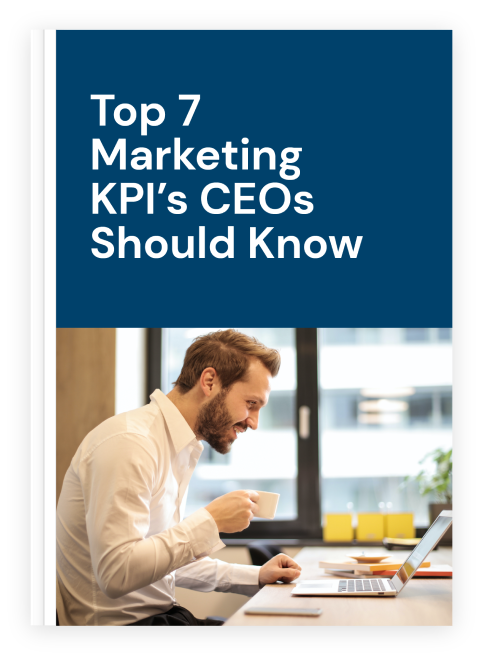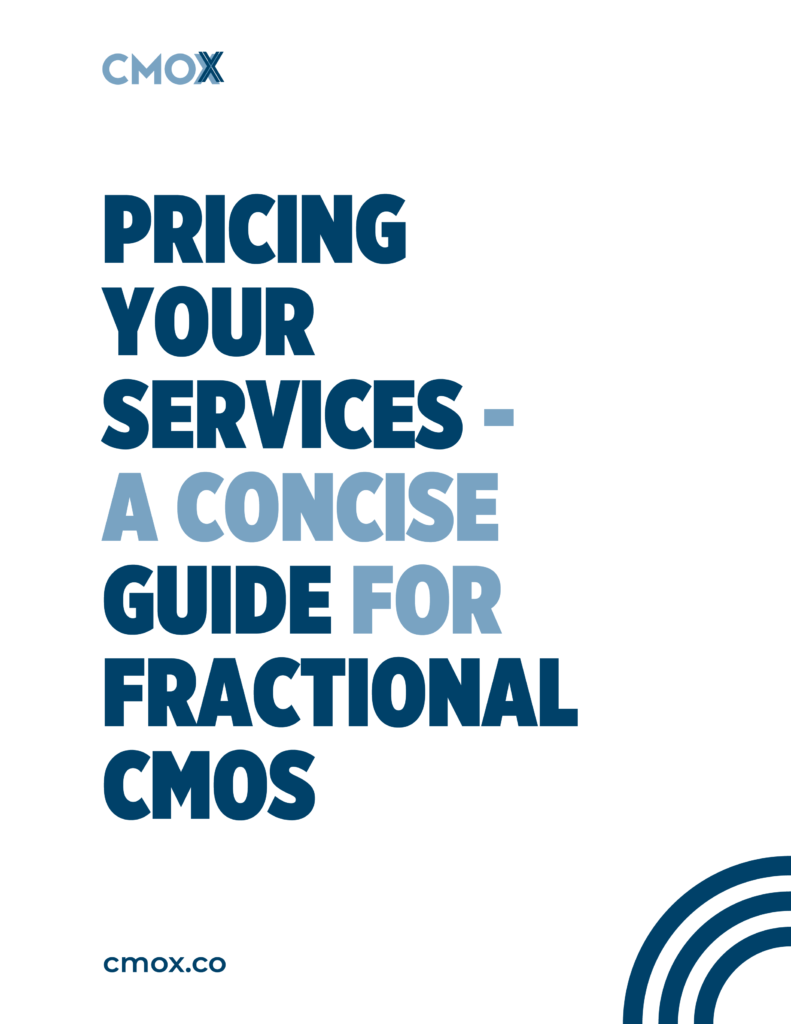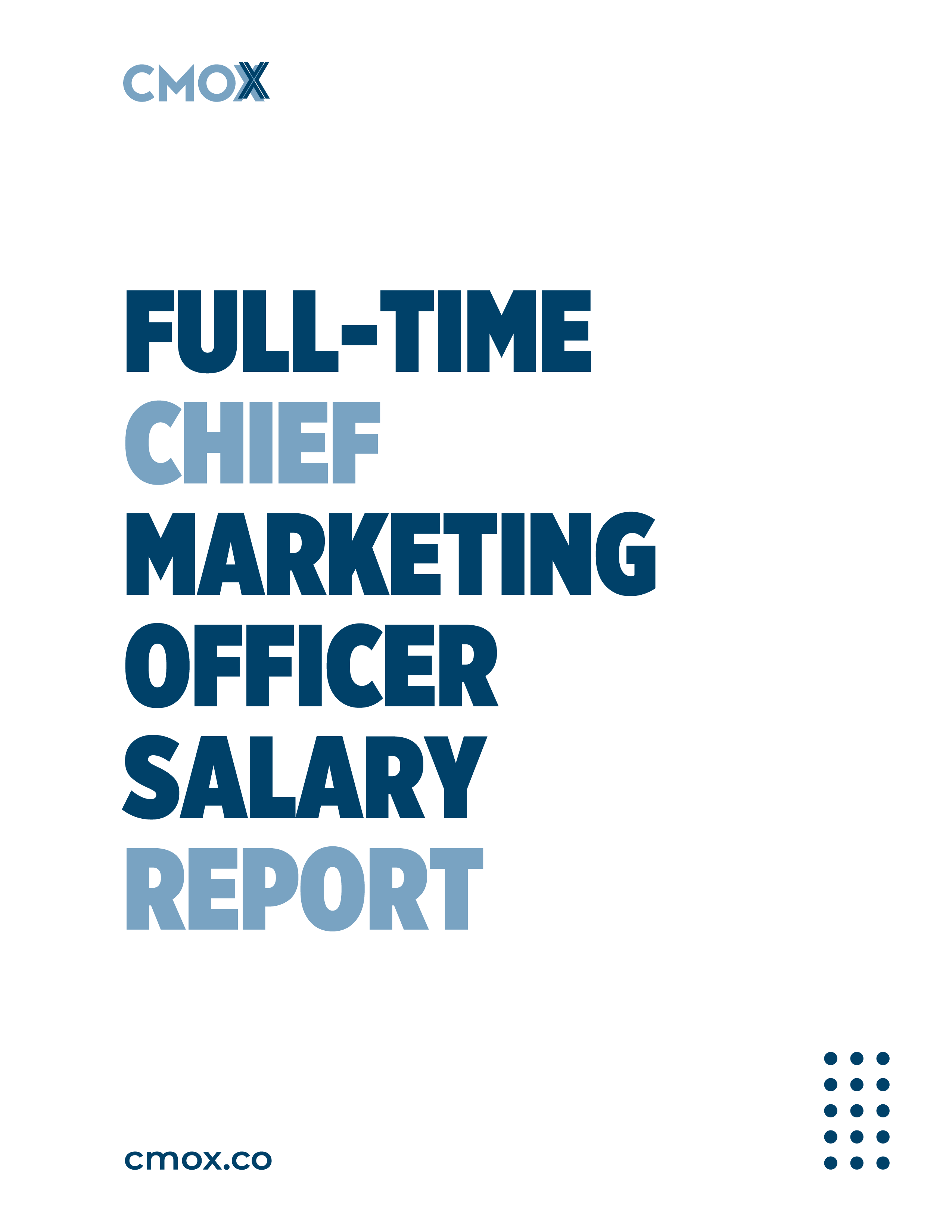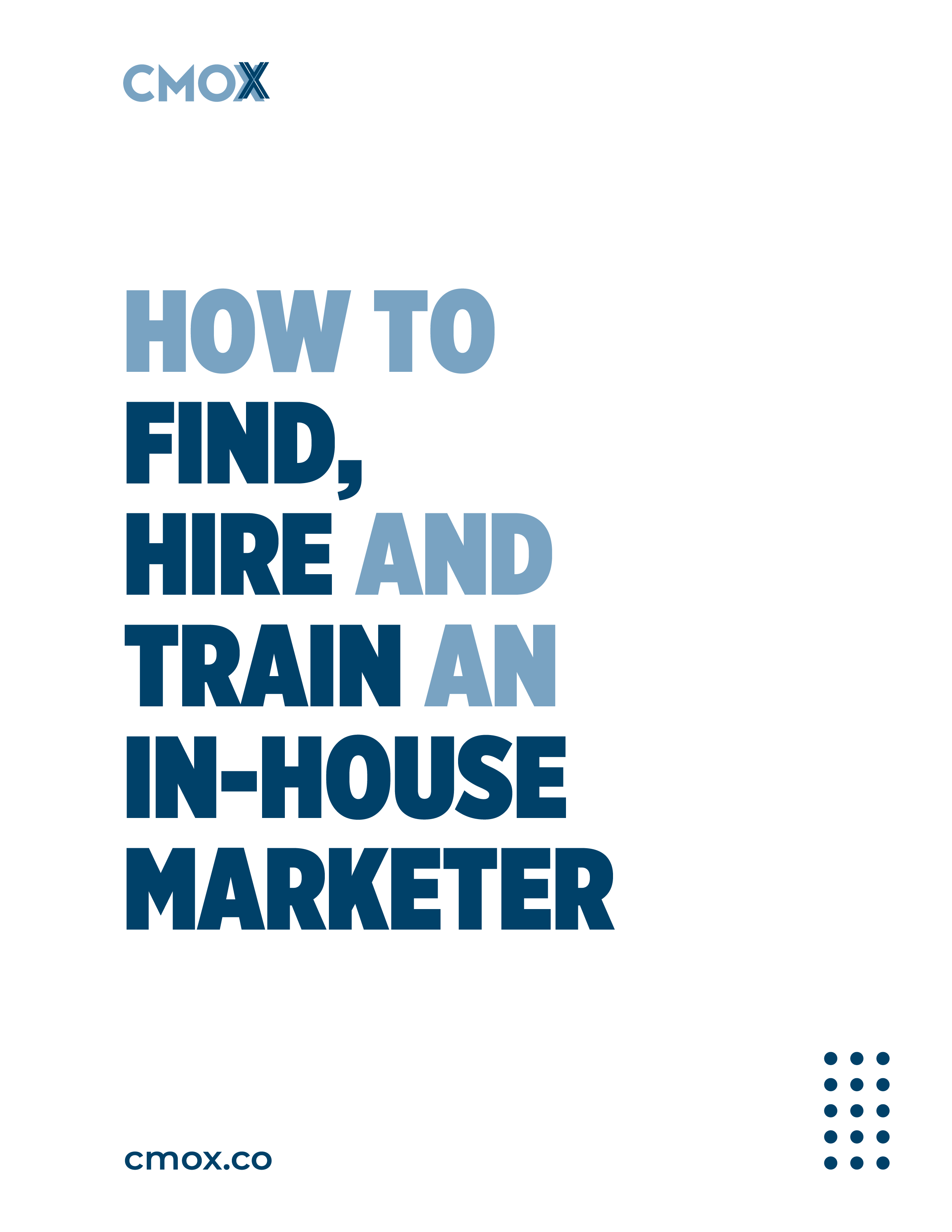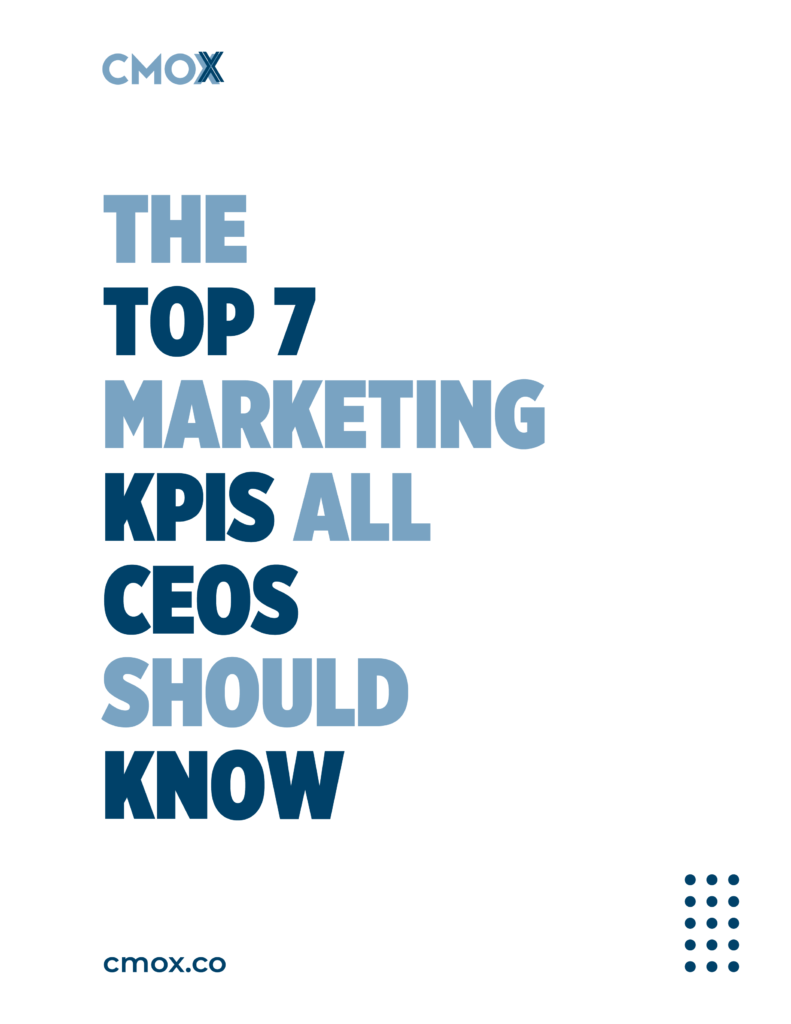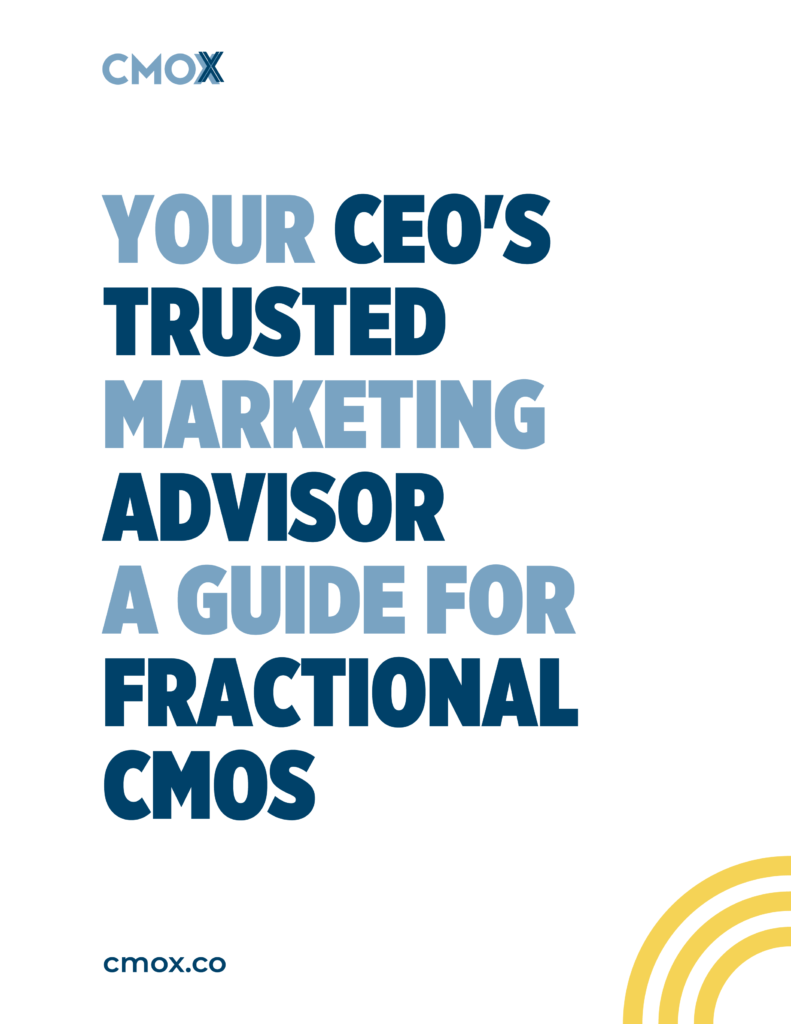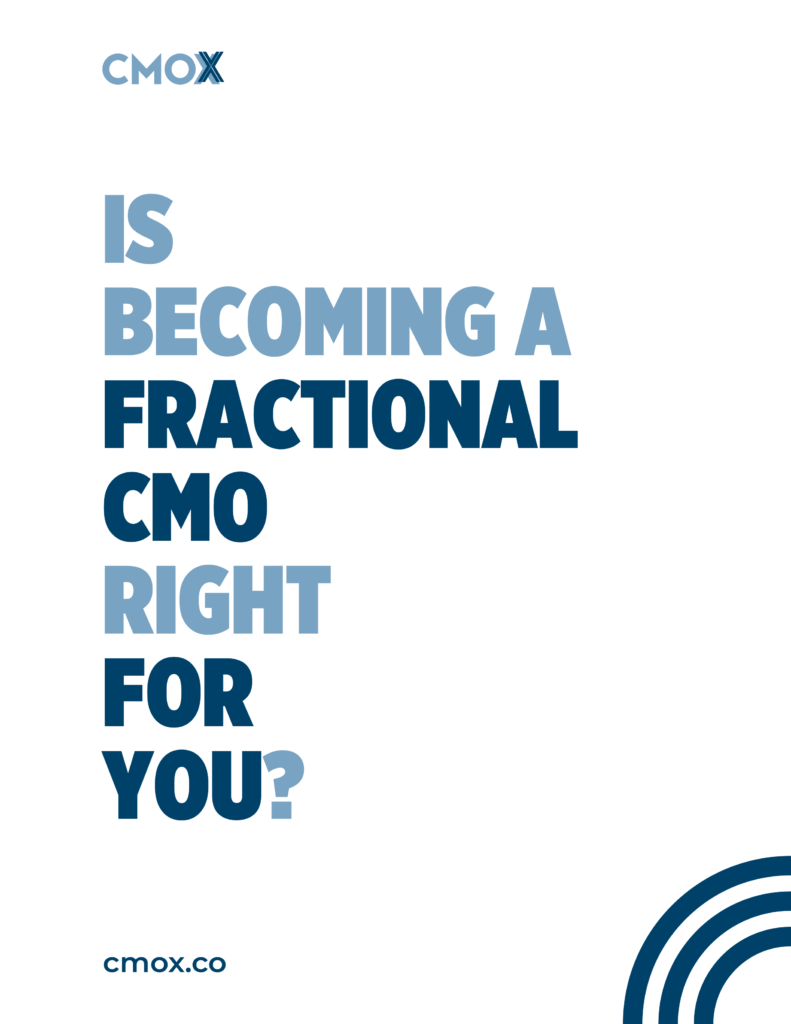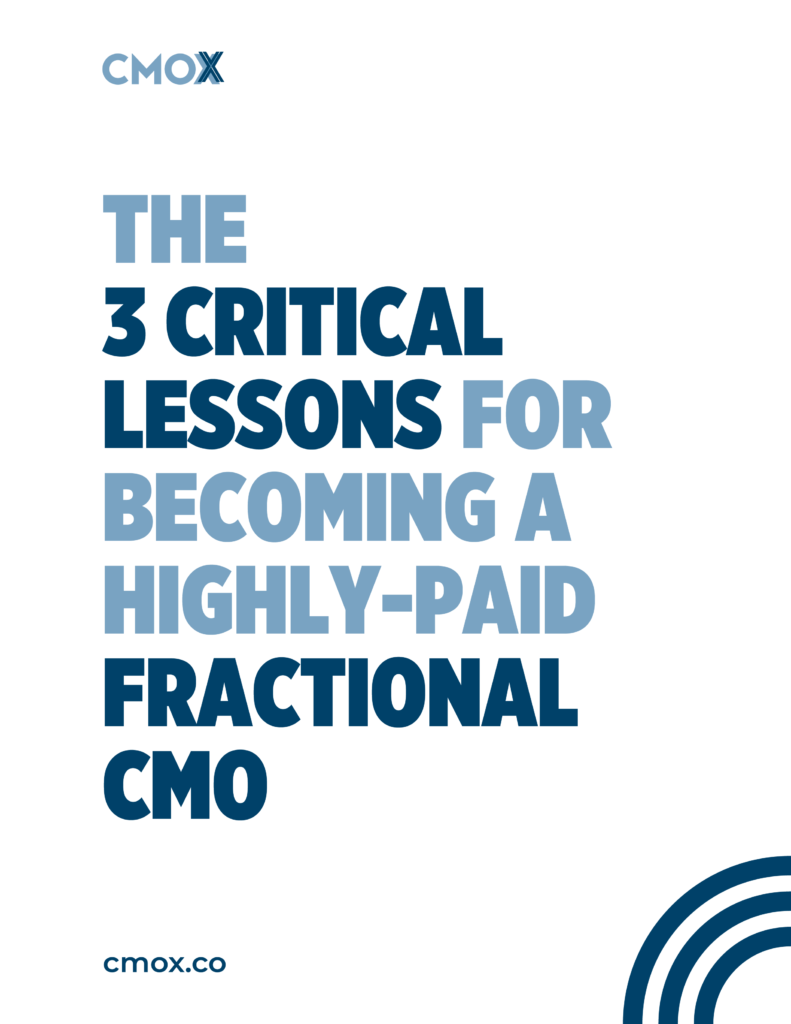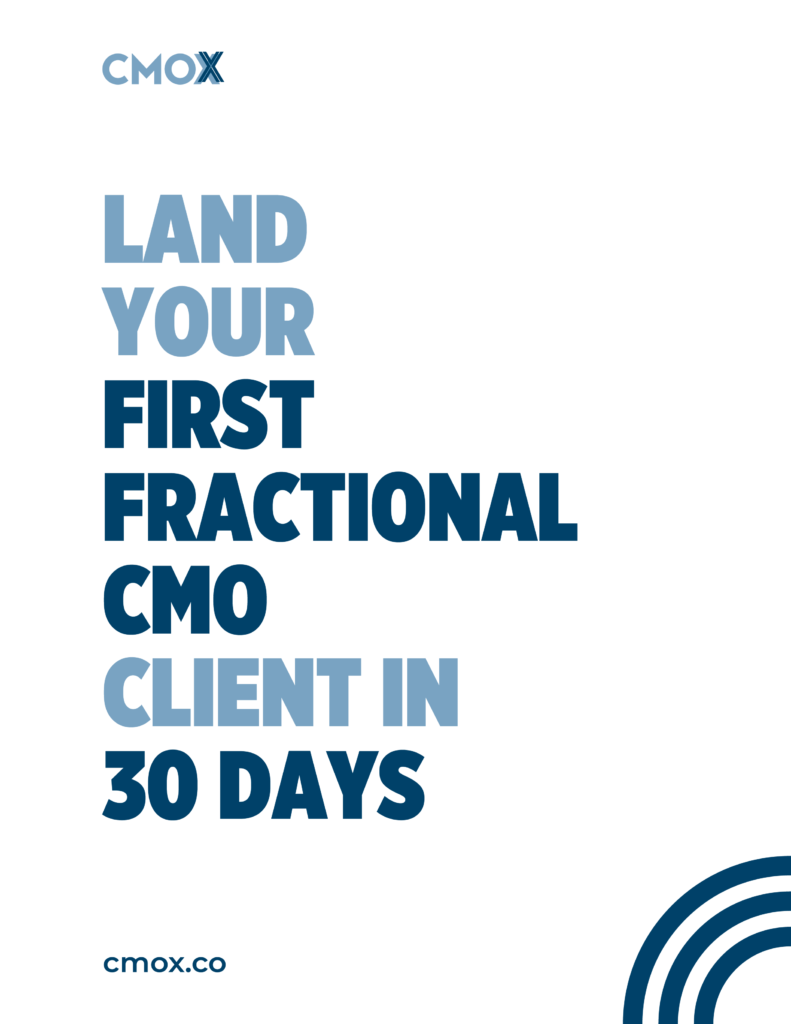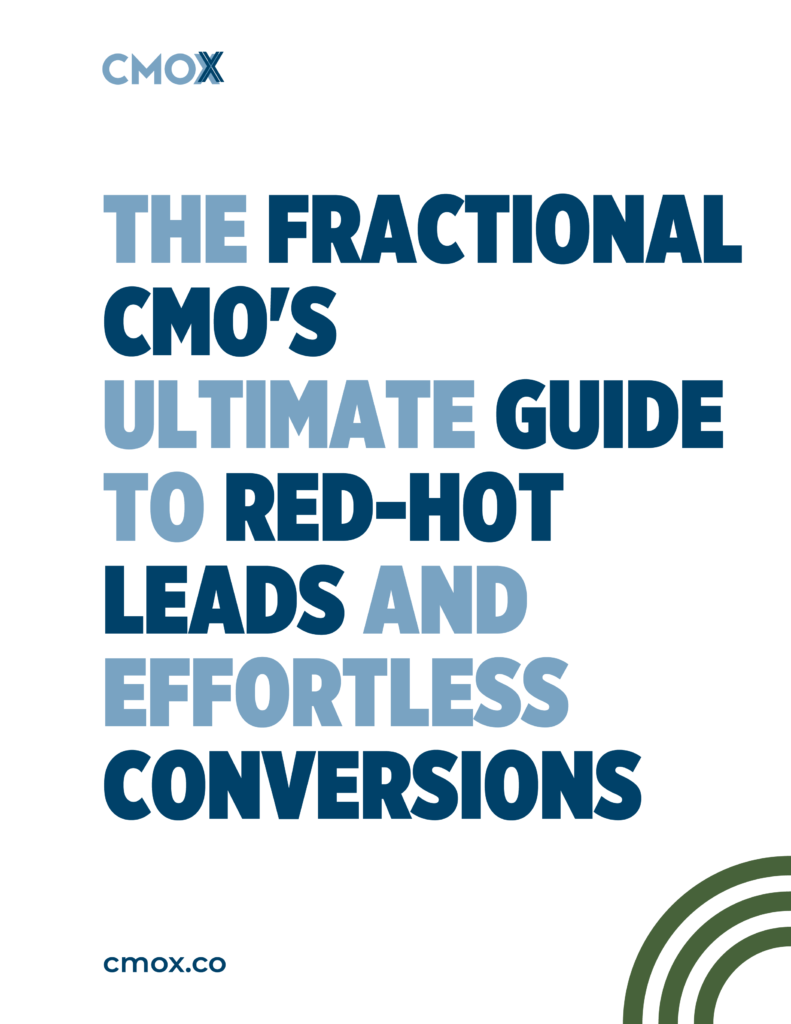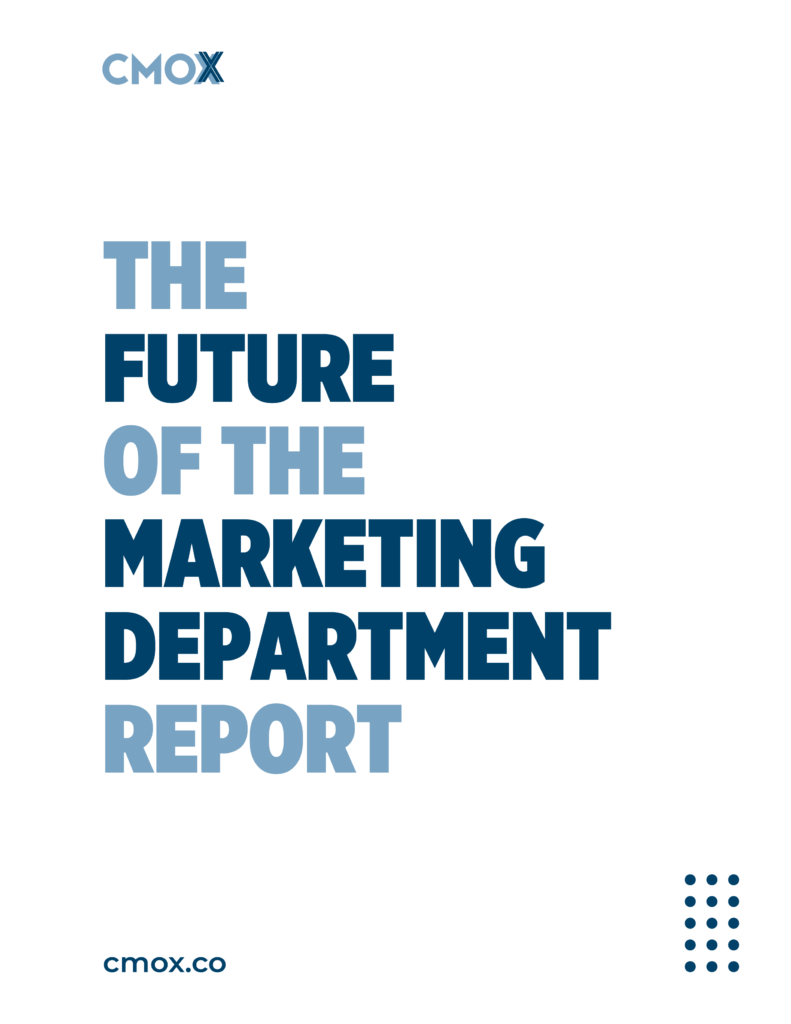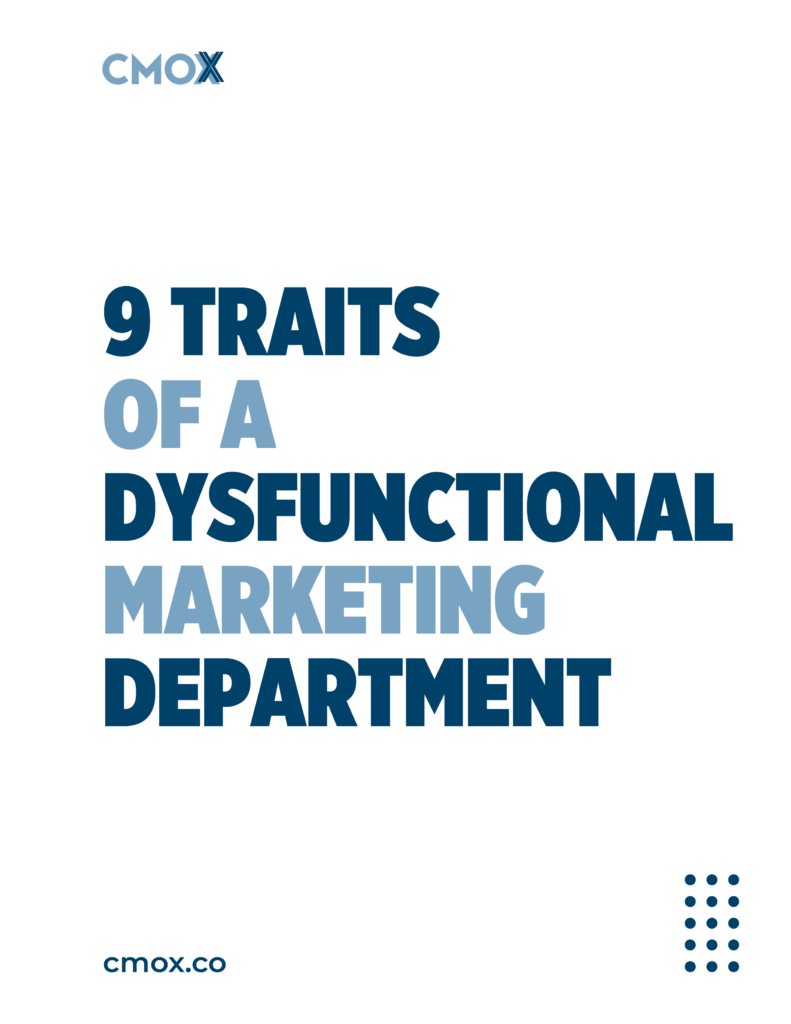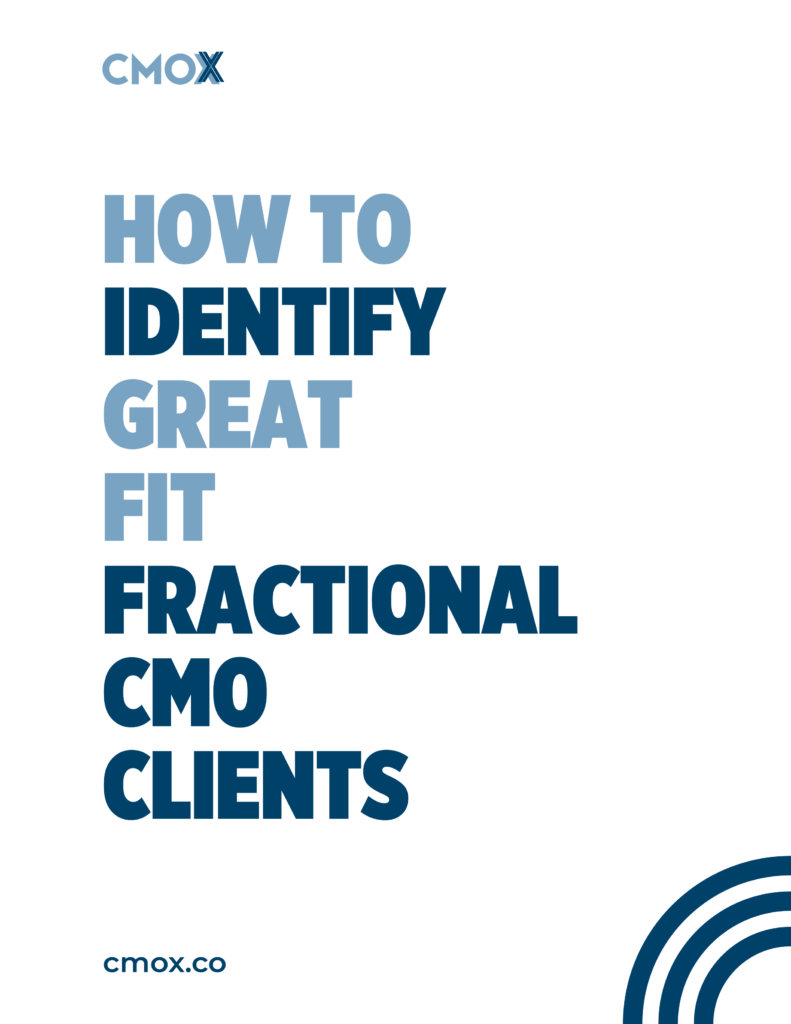Ep #92: Three AI Convergences Changing the Marketing Department

AI is moving fast—faster than we think. In this episode, Casey Stanton discusses the three major AI shifts that are already reshaping the marketing landscape. He dives into deep research tools, AI-powered voice agents, and the game-changing ability of AI to move beyond automation into real decision-making. What does this mean for fractional CMOs? Bigger opportunities, bigger challenges, and a chance to stay ahead before the market catches up. If you're a marketing leader looking to secure your future, this episode is a must-listen.

Episode highlights:
AI is moving fast—faster than we think. In this episode, Casey Stanton discusses the three major AI shifts that are already reshaping the marketing landscape. He dives into deep research tools, AI-powered voice agents, and the game-changing ability of AI to move beyond automation into real decision-making. What does this mean for fractional CMOs? Bigger opportunities, bigger challenges, and a chance to stay ahead before the market catches up. If you’re a marketing leader looking to secure your future, this episode is a must-listen.
Here’s what we talked about:
- The rise of AI deep research and why it’s a game-changer for marketers
- AI-driven voice agents and their impact on lead generation
- How AI is now training other AI models—what that means for businesses
- The implications of AI controlling computers (without APIs)
- Why marketing roles are shifting—and how fractional CMOs can future-proof their careers
- The importance of solving bigger problems and delegating everything except leadership
Transcript:
00:00:00 Casey: In this episode, I’m going to talk about the three convergences that are happening in artificial intelligence, why I think they matter for us fractional CMOs, and what we should do to capitalize on these opportunities as we support the businesses that we want to work with.
00:00:16 Casey: Marketers of the world, why do we work hard to solve small problems? Why do we reinvent ourselves and our clients over and over? And why are we giving away marketing strategy for free? With advancements in AI, we’re all seeing the marketing department shrink from the bottom up, and companies need you to serve them as their fractional chief marketing officer. It’s time to solve bigger problems and bring home a bigger paycheck. It’s time to create the lifestyle we deserve and to make a greater impact.
00:00:48 Casey: This is the Fractional CMO Show and I’m Casey Stanton. Join me as we explore this growing industry and learn to solve bigger problems as marketing leaders. The Fractional CMO Show is sponsored by CMOx, the number one company to teach you how to attract, convert, and serve high-paying fractional CMO clients on your terms.
00:01:12 Casey: All right, welcome back to another episode of the Fractional CMO Show. It’s me, Casey. I want to talk to you about some of this AI stuff that I’ve been nerding out on, and the applications that I think are important for you as a chief marketing officer, fractional chief marketing officer, business owner, fractional whatever officer, because I know some of you are listening to this podcast. And these are things that I’ve been thinking a lot about, and I’m calling them the three convergences in AI. And I think that we’re at a tipping point that is kind of somewhere between scary, like it’s scaring me a lot, and also, it’s really exciting.
00:01:52 Casey: Dan Sullivan from Strategic Coach calls what happens when entrepreneurs do their thing as creative destruction. We create and we destroy. We create something innovative and at the cost of something else that gets destroyed, right? And I think that that’s happening here. So, the tone is kind of weird, right? I do feel a sense of grief and loss here, and also, I feel a sense of excitement. So, let me tell you what these three convergences are and share why I have these feelings.
00:02:23 Casey: So, the first convergence… Even before we get to the first convergence, let me tell you some of the stuff on AI that I think has been really cool. So, early February 2025, OpenAI, ChatGPT, they came out with deep research. And what is deep research? It is AI doing research for you. And maybe, you’re thinking, “Oh, Casey, AI is already looking stuff up for me,” and yeah, it is, but it’s not researching it. Let me tell you the difference.
00:02:51 Casey: If you query OpenAI, like ChatGPT 4 or 4.5, and you ask it a question, it’s just going to give you the answer. Or I might say, you’re searching the web, and then two seconds later, it starts printing out the answer. And we all know how good that is. There’s a lot of really good information there. But what deep research does is it gives us the opportunity to dig in even deeper on stuff that you otherwise wouldn’t do.
00:03:15 Casey: So, for example, I asked it recently: find me PE firms in a city. Find me the managing partners or principals at PE firms that specialize in a certain type of industry in X city. Think about how long it would take to pull that information. You may be thinking, “Okay. See, I could go to www.clay.com and figure it out.” Yeah, you might.
00:03:36 Casey: LinkedIn? Sure. Search the internet? Yeah. Find the local private equity group and see who’s like a member? Yeah. These are all options, and you’re not wrong that those are potentially good ways to do it. But I want an exhaustive search. I want to take a research assistant in my office, which I don’t have. I have a cat, and just say like, “Go research this. Spend the day and find all of them for me.” And how many pages would they go to if they kind of did an exhaustive search? How many web pages would they go to? Not one, not two. They wouldn’t just spend all their time on LinkedIn. You’d probably go to dozens of pages.
00:04:14 Casey: When I asked that query to ChatGPT deep research, which is available in the paid version. You get like eight or 10 deep research tokens or credits per month for 20 bucks a month or a lot more for 200 bucks a month. When I give that query, it thought for eight minutes and looked at sources. It ultimately looked at 46 sources for me and printed out the answer for me in a really beautiful table. It was so useful, because it thought so long, because it did all that research.
00:04:53 Casey: You probably know that I’ve got some kids, and we’re thinking like, “Where’s my son going to go to school?” and we’re kind of thinking about all the options, and I’m like, “What do we do with the AI stuff? And do I want my kid to be a good agrarian, where he gets forced-fed a bunch of information that he has to recite, or do I want to teach him critical thinking? And what’s the most important right now? I want him to be outdoors and I want him to understand his body and how he thinks. And I want him to understand what’s AI and what’s not. He’s four, but this is where I want him to be.”
00:05:20 Casey: So, as my wife and I are having these conversations, she’s like, “I’m going to try this deep research thing.” Deep research thought for 17 minutes and looked at 102 sources for her, and found an exhaustive search for things. And she knew a lot of it, because she’s been thinking about the school systems and stuff, but this gave her more information than she ever would have found, probably, on her own. And it did it in 15, 20 minutes, and it costs effectively nothing.
00:05:47 Casey: And when I think of deep research, I think that we just wouldn’t do this. That level of research, you just wouldn’t do. Because given the opportunity for you to spend six hours, eight hours, researching something, are you going to do it or not? Here’s my thing: I’m not going to do it. I’m either going to find someone to do it or shit’s not going to get done. And deep research will do it for you. It’s huge, and it’s practically free today.
00:06:17 Casey: So, that’s one that’s already out. It’s been out for like a month and a half. Crazy. Grok has it. You can go to www.X.com, Twitter, and go to Grok and have it do deep research. They all have a button for deep research. I think Claude has a deep research, too. Perplexity, obviously, can do deeper research. But ChatGPT is the one I’m talking about specifically here. It’s interesting.
00:06:40 Casey: Here’s a prompt for you. “Find me all of the conferences that happen for my client.” Let’s say that your client is a HVAC in Ohio. “Find me all of the HVAC and service-based business events that happen within a 90-minute drive of this city.” You know, Chillicothe, Ohio. Boom! And it does the research and it spends 10 minutes thinking about it, and says, “These are all of the events that happened.” It’s crazy, right? That’s nuts. That’s stuff that just would have taken forever before.
00:07:15 Casey: As the fractional CMO, you can just prompt that, or you can ask someone else to prompt it, but at some point, it just doesn’t make sense to ask anyone else. You should just prompt it yourself, walk away, come back, and there’s your answer. It’s interesting. So, I think that’s a very interesting thing that’s happening right now in AI. Deep research.
00:07:34 Casey: Another thing that I think is really interesting is voice agents. And why do I care about voice agents? Well, I’m working on a project where we’re driving leads to call a phone number. We get a lead and then we ask them to call to book an appointment. It’s for a home service business. And what I was finding was that a lot of those calls weren’t being answered. A percentage of those calls every single month were not getting answered.
00:08:01 Casey: So, we instituted an overflow call answering with AI, and the AI agent picks up the phone. It’s like, “Hey, this is Jennifer.” It rings three times. If the real person doesn’t pick it up, boom, it rolls over to the AI agent and it goes, “Hey, this is Jennifer. I’m an AI agent. Let me ask you a couple of questions to get your information, so I can pass it on to my team so they can call you back.”
00:08:24 Casey: And then, I’ve listened to people submit their call and talk to this AI agent and have her chat and everything, and it’s very natural. It’s not like, “You stupid robot, why don’t you understand me?” The AI agent will talk and then the person will interrupt them. The AI agent will stop and say, “Oh, sorry about that.” It’s very human. And yeah, it’s a little rough around the edges, but I’ll tell you what—we’re making more money as a result of having this, even if it’s imperfect. But just think about where we’ll be in three months or 12 months. That’s the whole point of today’s podcast. Where are we going to be in three months or 12 months?
00:09:02 Casey: Okay. So, those are two things that I think are really important to consider right now in AI. How do you use deep research? And this is more than just like how do you do copy? How do you write ad copy? How do you get emails written? That kind of stuff. You should be doing that already in AI, because it’s pretty simple, but the deep research is really helpful. So, I want to talk about the three convergences and the things that I think are just crazy, that are just fundamentally changing the way that I see the future right now.
00:09:30 Casey: So, the first one is AI talking to AI. Just imagine that. An AI model can talk to another AI model. There’s a language that’s been developed for it, and for you, ham radio nerds out there, I can’t be the only one, it’s a frequency-shift keying communication method that passes 64 to 128 bits a second of data.
00:09:58 Casey: And why does that matter? It’s because human language is about 39 bits a second of data. So, if you and I are talking, we’re exchanging 39 bits a second of data. But if we use this FSK approach called Gibberlink, then we can do it at two to four times the speed of exchanging information. So, two AIs could talk to each other “in real time”.
00:10:21 Casey: Literally, the demo is of an AI agent calling another AI agent. One is on behalf of a person and the other one is on behalf of a hotel, and they say, “Hey, this is an AI agent. I’m calling to see if you have a room available.” The other one says, “Hey, I’m also an AI agent. Do you want to chat in Gibberlink?” They say, “Yeah,” and then, boom! It sounds like a dial-up modem from the ’90s and they’re just chatting with each other. It’s fascinating.
00:10:49 Casey: So, that’s happening. AIs can communicate with each other faster than we can communicate with AIs, faster than we can communicate with people. That’s very interesting to me. In and of itself, eh, kind of forgettable. But I think with these other two convergences, it’s telling a big story. So, two AIs can communicate faster, more efficiently, with less error, than we can as humans. Because if they’re using this frequency-shift keying, accents don’t matter. Yeah, it’s interesting.
00:11:20 Casey: All right. The second one: AI training AI. That’s a wild one. So, we saw this with DeepSeek. ChatGPT was built out pulling data from everywhere, right? I think it’s kind of well-known now that OpenAI effectively trained their models on all of the content that we, as people, have submitted to the internet over the course of time. They pulled YouTube videos, they pulled all sorts of stuff that they didn’t necessarily have the rights for, but they did it. And I mean, what are you going to say?
00:11:50 Casey: So, there’s this model now from OpenAI, ChatGPT 4, 4.5, whatever. Those models were then used to train another model. That model is called DeepSeek. We know that DeepSeek was trained on other models, and that’s really interesting. Why is it interesting? When a model can train a model, we’re starting to kind of fall into this place of the models just improving automatically on their own. Why isn’t that the next logical step? I mean, honestly, it’s probably happening. Models training models to get better models. It’s wild.
00:12:33 Casey: So, we know that that’s happening. And what is that going to mean for you? It means, ultimately, you’re going to have a simplified model on your phone, like a DeepSeek style derivative model. That’s not going to know everything ChatGPT knows, but it is going to know everything on your phone. All of your web browsing history, or maybe, it’s something from Llama, which is a Meta, Facebook, and it knows all of your Facebook stuff and your WhatsApp stuff and your Instagram communication and what you’re into and what you hover over and what you zoom on and watch multiple times.
00:13:09 Casey: These little models are going to have a lot of data on us and be able to help us find the things that we want. It’s just going to be fascinating. We’re all going to have our own models like we all have our own houseplants that we take care of. My model on my phone will be different than yours. Mine will be tuned to something that yours isn’t tuned to. So, I think that’s really interesting.
00:13:33 Casey: And then the third one, and this is the one to me that is just like the one that’s really got me feeling away. You know how am I feeling? Trepidatious, worried, scared, excited, enthralled, unprepared. Man, I’m just all over the place on this one. It’s AI moving the mouse and keyboard. So, AI controlling a computer.
00:14:01 Casey: So, think about this. If you hired an employee to work alongside of you, as a fractional CMO, maybe you hired a marketing technician, or you hired a assistant, whatever, they would ultimately probably have a computer and a phone and they would be in an office, maybe at home, but let’s say, just for simplicity, they sit next to you at your home office. Computer right there. How do you talk to them?
00:14:25 Casey: You turn to them and say, “Hey, today, I want you to do X, Y, and Z, and don’t forget, you got all these processes that you run every day. Just keep running those.” They’re like, “Cool. Got it.” And then they go to work. They critically think. And then, they turn to you sometimes and say, “Hey, quick question, boss. What do you think about X, Y, Z? Should I go this way or that way?” And you say, “Ah, here’s why I think you should go that way.” They’re like, “Okay, got it.” You’re like helping them understand how to make decisions on their own.
00:14:48 Casey: That exists today and that type of AI is called computer use. And it is unbelievable. I would argue to say that right now, it’s almost unusable. It’s not efficient. When I use Claude computer use, I get rate-limited, even though I paid for it. You know, it’s just like I try to do a simple task and it times out in the middle because I get rate-limited and this token issues or whatever. And maybe, I’m doing something wrong. But I think right now, it’s just a little mediocre. But where’s it going to be in three to 12 months?
00:15:28 Casey: So, what does computer use look like? It looks like a web browser on your computer, and on the left-hand side, it’s prompts, like you’d expect ChatGPT, and on the right-hand side, it’s another browser window. So, it’s like you’re viewing the chat prompt and you’re viewing the web browser. So, here’s what you could do. You go to the web browser, you take control over it, and you log into HubSpot and you log into email and you log into Slack. And then, you go over to the prompt side and say, “You are now logged into these three services. When X happens, do Y and then Z.” And it starts thinking and monitoring inboxes and lead flow and deal stages. That’s crazy to me. Computer use means that we’re falling away from APIs.
00:16:18 Casey: I know I’m using a lot of technical stuff, and I’m going to try to just bring this to an easy level for you to understand if you’re not technical. So, an API is how two applications communicate with one another. So, I have an API on between Facebook and I use ActiveCampaign for my CRM. When a lead submits a form on Facebook from one of my ads, it gets automatically added to ActiveCampaign. Those two tools are synced together through something called an API. It’s an application interface. It’s just like they both have pipes and you plug them together, and now, the data passes between them.
00:16:57 Casey: The good thing about that is APIs are usually solid, they don’t break very often, you can scale them. APIs are built for volume. You can get a ton of leads going through every second and APIs can keep up. So APIs are good, but many times I’ve worked on projects and the API has just not had what I needed it to have. It’s just limited on capacity. The developers didn’t develop the ability to edit fields inside of a lead record, so I can add the new lead to ActiveCampaign, let’s say, but I can’t add the traffic source that it came from, or I can’t add a note about it, or I can query ActiveCampaign but I can’t get certain data out of it. I can’t know the deal stage of the opportunity or something.
00:17:46 Casey: So APIs have limits and those limits are controlled by the developers, who just haven’t written the code for one reason or another, either they don’t want to, it’s not on the product roadmap, they just haven’t gotten there yet, whatever. So APIs are how the internet works. APIs are a lot like how Zapier works. Zapier is with APIs. It’s also with webhooks, that kind of stuff. Webhooks you can kind of think of similar as APIs, but here’s the thing that’s changing. If computer use, like cloud computer use or openAI’s version which is called Operator, if Operator can just view a webpage or monitor an inbox or do whatever, it doesn’t need an API. It’s a human and it’s just doing things very fast.
00:18:31 Casey: So that means, integrating AI into your workflow is less about the tools that you’re using having AI, does ActiveCampaign have an AI function? I mean they probably do. I don’t know, but I don’t care about that because I’m fine with whatever ActiveCampaign does for us. What I want is maybe something interacting with ActiveCampaign and other things. That’s the AI that controls both, and it can do that because it can pull up the website and do things directly there. So that’s going to change a lot of stuff. The implications of that are significant and if you’re not getting it, I would just summarize it as this white-collar workers are in trouble.
00:19:18 Casey: Let me tell you an example, I’ve got a CPA, solid guy. My wife and I met him. I have a relationship with him, but he doesn’t do my taxes. He has a guy that works for him that does my taxes. I don’t know the guy’s name that does my taxes. I know the guy that I know. I know the guy whose name is on the business right, who sold me, who I feel like is my point of contact, but the laborer it’s some other guy. I think that laborer could get replaced by an AI pretty dang quick. This week, no. This month, no. This year, maybe. In the next three years, yeah, probably, and if you think about the pressure on the entrepreneur, my CPA, he’s going to be able to employ his people and have a traditional business and have the margins that aren’t as good because he’s got a bunch of humans that he’s got to deal with and humans are expensive.
00:20:10 Casey: You got to pay taxes, employment taxes, State of Pennsylvania taxes, city taxes, city wage taxes. I mean, it’s expensive to employ people. At some point he’s going to say, “All right, I’m just going to go AI, my next hire instead of a human will be AI and then maybe as people retire, he replaces them with AI. Who knows how he do it. But why wouldn’t he be incentivized to do that, If AI could do just as good of a job? If AI could go write me an email and it’s like, “Hey Casey, we don’t have your W-9 from X Y Z, can you please send it over?” They could write that email to me. They could just craft it in the email inbox inside of outlook or whatever, and then send it and then when I reply back with it. Then it follows up, adds that to their records, processes the paperwork.
00:20:57 Casey: My guy then does the final review on everything to make sure it looks good and then it goes to the IRS. So that’s going to happen, that’s happening. That’s going to happen, oh man, and I say that out loud. It’s just a wild thought. I think we’re just a couple of years away from mass, mass job loss in white-collar work. I’ve got a niece, she just got her PhD, super proud of her and I got to watch her defend her thesis, Is that what you call it? At the University of Michigan and she did a great job and a couple week later, she saw all of that funding from her lab just get destroyed. It’s gone. So now, all those people that were in her lab that were maybe a year behind her, they don’t have funding. So it’s going to take them more years to get that funding.
00:21:57 Casey: But the question is, are we going to need those research people? Is my niece one of the last PhDs coming through the research pipeline as a human? I don’t know, but I think that there was an era that started 30 days ago that forever changes things. I think it’s really interesting. I’ve got a personal thing that we’re doing. My daughter has been part of Princeton’s study on the first 1000 days of language development and it’s super cool. So we installed cameras and microphones in our kitchen, dining room, and living room, and playroom before my dad was born and they just recorded a corpus of data of my daughter and it’s so fascinating to have all of this data.
00:22:47 Casey: They have all of this data. I can request any of it, but all this data on her language development, how she learned to say milk, she said meh to milt, to milk, right, like she has a process for it. It took her two years to develop that language and they’re studying all of that. It’s very interesting. They’re running AI models on it to understand things. They’re running AI models, that’s so cool to see how language develops because they have other families doing it that are only speak English right, they only have one language right now because it’s their first cohort of this and they’re able to control the environment and say, “If we pull, if we take the number of new words that the parent introduces down by this percentage, how does the baby’s language develop at a different rate?” This is stuff that they’ve been able to create and model in the last few months with this corpus of data from a dozen or so families.
00:23:42 Casey: AI is doing that for us, fascinating. We’re getting better understandings of language development. We’re getting people to, we’re doing work that other humans were doing white-collar workers, these researchers I think that Princeton, super smart, lovely people on the cutting edge but they’re quickly losing funding and they’re going to lose the pipeline of people moving into those roles because there won’t be research jobs for these folks. I mean, it’s just going to be a crazy change, we’re kind of in the glory days. It feels like, in some ways, for some of this research that humans are doing, because AI is going to do it faster. It’s just a lot going on and you have to make the decision to be in a place that is less likely to get hurt from AI.
00:24:40 Casey: I feel like I’m talking to the John Henrys of forever ago, when the steam engine came out. This is a special time or when the jackhammer came out, or whatever. This is just a wild time. So we have to, if we want to take care of ourselves and our family, we have to get in a position that’s safe. So I think about this a lot. I support my family. I want to make sure we’re good. So where am I focusing? I’m focusing on the thing that’s going to last. That’s not going to get taken by AI, and the more I think about it also, the more complex marketing gets. Marketing is harder than ever before and also easier, right? It’s like the duality of complexity and simplicity at the same time, you still need someone who understands what to do and drives it forward.
00:25:31 Casey: But what I used to be able to do with a team of 12 or 13, I could do today with a team of three or four, with everyone having a couple of AI tools. So it’s just top of mind for me right now. Where do I want to be? Where do I want you to be? Well, wherever you want to be right, that’s where you should go, but where I think that marketers ought to be is just moving up the chain to being the decision maker, the owner of the strategy, being the leader, being the one throat to choke for marketing, being the top dog in marketing, where all things come to you first and then you figure out how to do it, and sometimes it’s people. Sometimes those people are in office, full-time US workers, salaried right. Maybe it’s that kind of tradition, maybe it’s contractors, maybe it’s offshore labor, maybe it’s AI. It’s your job to figure that out.
00:26:20 Casey: I don’t think, I mean, I guess ultimately, the role of the CMO would one day be gone. If we follow this to its logical conclusion, AI will just AI itself and train itself and get better. I would say that the last role that AI is going to take is the CMO in the marketing department. In the marketing department, AI is going to struggle to lead, especially leading humans. So I think the CMO is going to persist the longest. I think it’s the safest place for us to be. Also, being a fractional CMO affords you time, and what do you do with time? Whatever you want, and I think you ought to get into things that are life-affirming. Playing music, dancing, singing, seeing art, making art, not just being in the consumption side of the world, but to be in the creation side of the world.
00:27:16 Casey: And doing the things that are human, understanding ourselves, understanding our emotions, understanding our beliefs, challenging our beliefs, personal development, health, wellness, fitness, that kind of stuff. If you’re focusing your time on hobbies and that spectrum of things, life-affirming things, raising your children in a way that you’re proud of, supporting things that you care about, that’s how we have to be, because what are we going to do when the robots effectively take over all of the low-end jobs in marketing and then move their way up that chain and start eating the marketing department from the bottom up?
00:27:56 Casey: We should be using the time now to get into the hobbies and the things that we love and just to fly our freak flag a little bit and be who we are. So I think the fractional CMO role affords us incredible opportunity to support our clients and to support ourselves and to be safe. I wouldn’t want to be a full-time copywriter right now. I’d be making a shift to be a fractional CMO. I wouldn’t want to be a media buyer right now. I’d be making a shift to be a full-time fractional, to be a fractional CMO. So these things are really important to me and I hope they’re landing with you. So, it’s a weird one because what do I want you to take out of this?
00:28:38 Casey: I want you to take out of this that we’re at an inflection point with AI and things are fundamentally changing and the flywheel is spinning and how do things not get crazier when AI is training AI, AI is talking to AI, and AI is moving mouses and keyboards for us, we’re three-to-six, 12 months away, whatever. Give it two years and life will absolutely be different. Like Apple intelligence on the iPhone, it’s garbage, it’s totally not really usable. Give it 12 months, what’s it going to be like? Then give it two years, what’s going to be like then? So, it’s where things are going and we can have feelings about it. It’s fine, but if we want to take care of our families, we’ve got to get ahead of it, and we get ahead of it now.
00:29:25 Casey: Get ahead of it right now and become a fractional CMO, because the market will inevitably get more busy. We’re early. You’re hearing this early. You’re hearing this way before the market understands it. I commented on something recently and people just flamed me on the internet about it. They’re like “What do you mean? Robots are going to, like you’re an idiot.” It’s like, I think I’m right, though I really do. So, I think you have to get in a position to do the three things solve bigger problems, that’s one. Two is delegate everything except leadership, and then three is practice predicting the future. Solve bigger problems. The bigger the problem, the bigger the reward. That means the more money you can make.
00:30:08 Casey: Delegate everything except leadership. Once I’ve solved the problem. For me, solutions are “Oh, let’s go hire an agency to do it.” “Oh, let’s go do this.” “Oh, we need to get a book done, someone’s going to have to interview me to extract the content,” right, I’m going to delegate everything I can except leadership. And then, finally, practice predicting the future. Think about what’s going to happen, predict it. Build a long-term approach to what you think might happen and I think that this stuff, this is me, you’re hearing me predict the future, am I right? I don’t know. All the signs that I’m seeing point to me being pretty right. So we got to take advantage of the opportunity that’s before us.
00:30:51 Casey: We got to take care of these incredible gifts that people create for us every day and release new AI models and tools, but we need to think about the things that are most important, I think, which is solving big problems for clients that we want to work with and charging appropriate rates for them, and not getting pulled into the implementation work, and being the marketing strategist and leader, and building a name for yourself and not just phoning it in and trying to win a client or two, but building something serious and significant that you can hold, because I think things are going to get difficult here in the future and like entrepreneurs, make the world go round, that’s your opportunity is to serve great companies and help them.
00:31:29 Casey: So, I’m excited about the future. I question how I’m going to raise my kids in the future, I question how things will be different in the future. I don’t really know, but I do know one thing that being a fractional CMO is the safest place for me and my family and the safest place for the folks inside the CMO Accelerator. I’m recording this on March 13, and yesterday I met with my CMOs. We spent a half-day together and we came up with the quarterly plan for their biggest client. So they all had the big client or, if they didn’t have a client, they came up with their dream client and they built out a real quarterly plan.
00:32:06 Casey: They finished that with me and then they’re going to go next week and present it to their teams and they’re going to get buy-in on the quarterly plan and then they’re going to be off to the races well before right I did that March 12th well before the start of Q2, the Q2 plan is locked and loaded and they’re going to be off to the races and they’re going to be confident and they’re going to deliver high value and, as a result, they’re going to charge high rates. So, I just encourage you to make the decision if you want to be a fractional CMO or not, and if you do, let me help you. I’ve got a great team and we’re really good at helping fractional CMOs build their business, win clients and serve their clients. We’re having the conversations that you just don’t have anywhere else about this stuff.
00:32:51 Casey: It’s the application, it’s not just AI for the sake of AI. What’s actually happening? What’s changing things? How do we use AI effectively? It’s great. So if you want to join, just book a call with my team first, let’s see if we can even help you. Just go to CMOx.com/call , CMOx.com/call and book a call with my team. We’ve got an incredible future ahead. I’m very excited about it and I would love to support you if being a CMO is right for you, all right, I’ll see you soon, take care. Thank you for sticking around for the full episode. As you know, learners are earners, but you’ve got to take action on what you heard today. For more information and show notes, visit FractionalCMOShow.com. If you’d like me to answer your questions on an upcoming episode, you can share your question at FractionalCMOShow.com. And last, please hit the like and subscribe button so that I know that this content is helpful to you. All right, go get them.
Join Our Community
We are excited to announce the Fractional CMO Community Facebook Group. This aims to be a place where Fractional CMOs or marketers considering becoming a Fractional CMO can connect and share ideas.
Locations CMOx® serves
- New York
- Philadelphia
- Los Angeles
- San Francisco
- Chicago
- Houston
- Dallas
- Austin
- Miami
- Atlanta
- Denver
- Boston
- San Diego
- Seattle
- Portland
- Minneapolis
- Milwaukee
- Detroit
- Phoenix
- Washington D.C.
- St. Louis
- Toronto
